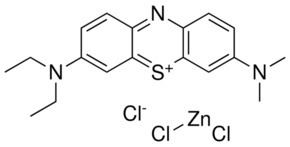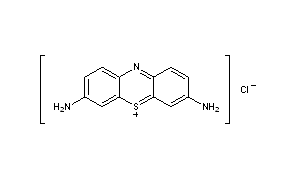Pubchem 65043 | ||
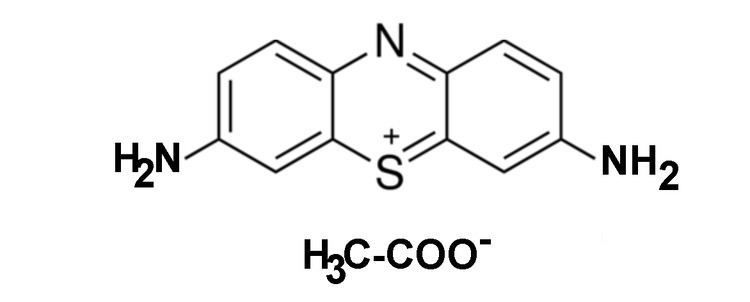 | ||
Thionine, also known as Lauth's violet, is the salt of a heterocyclic compound. A variety of salts are known including the chloride and acetate, called respectively thionine chloride and thionine acetate. The dye is structurally related to methylene blue, which also features a phenothiazine core. The dye's name is frequently misspelled, with omission of the e. The -ine ending indicates that the compound is an amine.

Dye properties and use
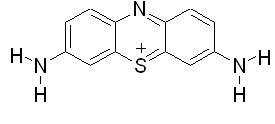
Thionine is a strongly staining metachromatic dye, which is widely used for biological staining. Thionine can also be used in place of Schiff reagent in quantitative Feulgen staining of DNA. It can also be used to mediate electron transfer in microbial fuel cells.
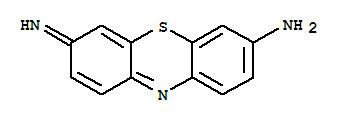
When both the amines are dimethylated, the product tetramethyl thionine is the famous methylene blue, and the intermediates are Azure C (Monomethyl thionine), Azure A (when one of the amines is dimethylated and the other remains primary amine), and Azure B (Trimethyl thionine). When methylene blue is "polychromed" by ripening (Oxidized in solution or metabolized by fungal contamination, as originally noted in the thesis of Dr D L Romanowski in 1890s), it forms thionine and all the Azure intermediates.
